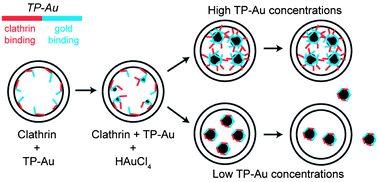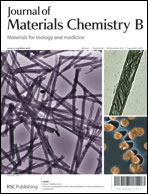Engineered clathrin nanoreactors provide tunable control over gold nanoparticle synthesis and clustering
Abstract
The use of biomolecules to direct nanomaterial synthesis has been an area of growing interest due to the complexity of structures that can be achieved in naturally occurring systems. We previously reported the functionalization of self-assembled clathrin protein cages to enable synthesis of nanoparticles from a range of inorganic materials. Here, we investigate the ability of this engineered biomolecule complex to act as a tunable nanoreactor for the formation of different arrangements of gold nanoparticles in three dimensions. We find that self-assembled clathrin cages functionalized with engineered bi-functional peptides induce formation of gold nanoparticles to generate solutions of either dispersed or clustered gold nanoparticles on demand. The 3D arrangement of nanoparticles is dependent on the concentration of the engineered peptide, which fulfills multiple roles in the synthesis process including stabilization of the nanoparticle surface and localization of the nanoparticles within the self-assembled clathrin cage. We propose and evaluate a mechanism that allows us to predict the peptide concentration at which the nanoreactor behavior switches. This work provides insight into peptide-based surfactants and the potential for incorporating them into strategies for tuning biological mineralization processes in mild solution conditions to generate complex structures.


 Please wait while we load your content...
Please wait while we load your content...